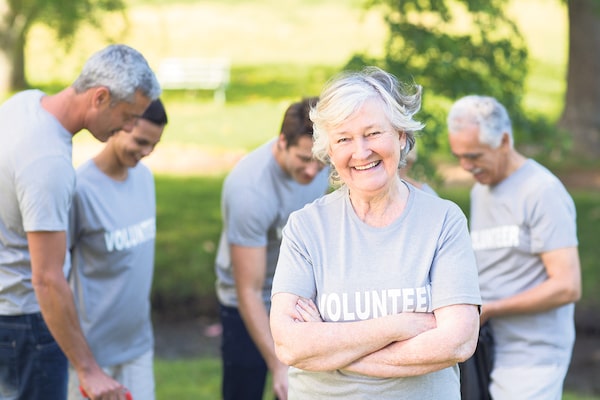
Many of Canada’s baby boomers are ready to retire, but what’s next? A growing number of seniors choose to volunteer in order to stay active and socially connected, and the not-for-profit sector benefits from their participation.
“Volunteering is a reciprocal relationship for these people and the organizations they help,” says Paula Speevak, president and CEO of Volunteer Canada, which provides national leadership on volunteerism in collaboration with volunteer centres around the country. “This means that their personal goals can be achieved while the organizations are achieving their missions.”
She says that people’s capacity and interests are influenced by their stage in life and personal experiences, “and as our population ages, boomers as a group have generated a particular interest within the voluntary sector.” This brings concerns about how best to capitalize on their efforts and to deal with their busy lives and high expectations.
Statistics Canada reports that volunteers are getting older and more educated; indeed the number of hours contributed by volunteers over 55 rose by 8 percentage points between 2004 and 2013, according to its General Social Survey on Giving, Volunteering and Participating. More than 38 per cent of Canadians aged 65 to 74 volunteered an average of 231 hours a year in 2013, about double the hours volunteered by those 35 to 44.
Speevak says that baby boomers transitioning from a busy work life have personal goals in volunteering, from developing new abilities and avoiding social isolation to “having the opportunity to shape the community and ensure its health in the future.”
Volunteering is a reciprocal relationship for these people and the organizations they help.
— Paula Speevak, President and CEO of Volunteer Canada
Some volunteer informally, for example welcoming refugees or walking a neighbour’s dog, while the formal volunteering roles boomers get into can be intense. These might involve fundraising, board and committee work, and specialized fields such as media monitoring, blog writing and advising on public policy or human resources practices.
Seniors in such positions can be demanding, and they may find that organizations are not well prepared for them, she cautions. “They can feel that their time is not being effectively used, and that can be frustrating.”
Boomers can also face barriers to volunteering and especially time constraints. For example, they might take on second paid careers or find themselves caregiving for aging parents, spouses, children and grandchildren. Some are simply busy balancing travel plans and social commitments.
One trend among organizations is that such volunteers are given project-oriented, short-term assignments that require their talents but have a finite end, Speevak says. They can volunteer in pairs or groups, which “builds in resiliency,” ensuring continuity in the activity being done.
“Organizations have to be flexible and creative,” she says. Meanwhile, it’s important not to have a “revolving door” of volunteers tutoring or mentoring students or visiting people in old-age homes.
Ms. Speevak says studies show that many seniors “need some open space” after they retire, and therefore they commit to volunteering only after about 18 months. At that point they’re looking for more structure and a “sense of purpose,” and they often focus on the legacy they’re leaving, she adds. “There is a desire to live in a more meaningful way.”
Advertising produced by Randall Anthony Communications. The Globe’s Editorial department was not involved in its creation.
Live your best. We have a daily Life & Arts newsletter, providing you with our latest stories on health, travel, food and culture. Sign up today.